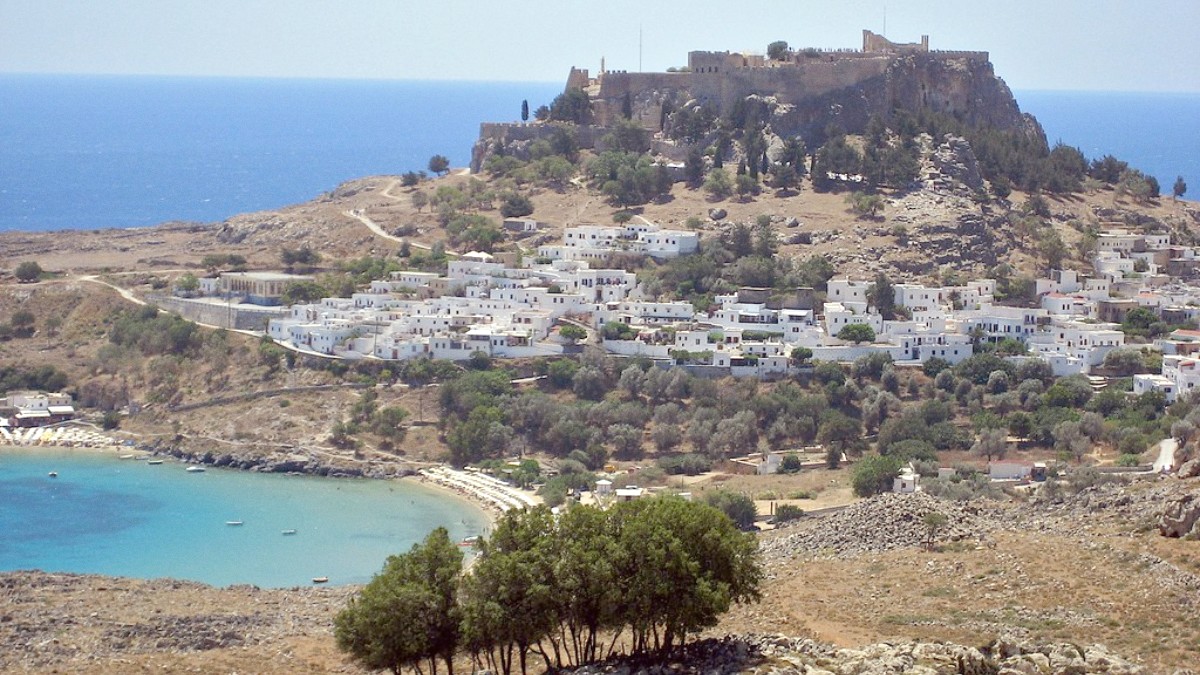
Dodecanese, Greece
Rhodes Town invites you to explore its layers, soak in its atmosphere, and discover its many wonders. Visitors often find a sense of wonder as they move from the fortified Old Town to the lively New Town and its inviting beaches. The light here is especially captivating, making every vista a photo opportunity.
Rhodes Town sits on the northern tip of Rhodes, the largest island in the Dodecanese group, located in the southeastern Aegean Sea. This strategic position, close to the coast of Turkey, shaped its historical importance as a crossroads between East and West. The island stretches approximately 79.7 kilometers (49.5 miles) in length and 38 kilometers (24 miles) in width, encompassing diverse landscapes from pine forests and rolling hills to fertile valleys and long sandy or pebble beaches.
Rhodes Town specifically occupies a peninsula, bordered by the Aegean Sea on its northern and eastern sides. Its harbors, Mandraki and the Commercial Port, face east, offering sheltered docking for everything from fishing boats to large cruise ships and ferries.
The history of Rhodes Town spans millennia, leaving behind an impressive legacy of architectural and cultural layers. Its story begins in antiquity, with evidence of Minoan and Mycenaean settlements. The city of Rhodes was founded in 408 BC, quickly growing into a prominent naval and commercial center. It became famous for the Colossus of Rhodes, one of the Seven Wonders of the Ancient World, a massive bronze statue of the sun god Helios that straddled the harbor entrance. Though the Colossus fell in an earthquake around 226 BC, the town's importance continued through Roman and Byzantine periods.
The most defining era for Rhodes Town, however, came with the arrival of the Knights Hospitaller of Saint John in 1309. For over two centuries, these crusader knights fortified the city, transforming it into a formidable stronghold against the Ottoman Empire. The Old Town, an UNESCO World Heritage site, showcases this period vividly with its grand Palace of the Grand Master, the Street of the Knights, and robust defensive walls. This medieval city is a testament to military architecture and urban planning of the era.
Minoan and Mycenaean presence.
Growth into a prominent naval and commercial center.
Home to one of the Ancient World's Wonders.
Introduction of distinct architecture.
Period of restoration and development.
In 1522, the Ottomans conquered Rhodes after a long siege, ruling the island for nearly 400 years. This period introduced Ottoman architecture, mosques, and public baths, adding another distinct layer to the town's character. In 1912, Italy took control, bringing a period of restoration and development that saw the reconstruction of some medieval buildings and the introduction of art deco elements.
At its heart lies the Medieval Old Town, an UNESCO World Heritage site, a captivating maze of cobbled alleys, impressive fortifications, and historical buildings. Within these walls, visitors discover the Palace of the Grand Master, the Archaeological Museum (housed in the Hospital of the Knights), and the famous Street of the Knights. The Old Town provides a pedestrian-only experience, making exploration a joy.
Beyond the medieval walls, the New Town unfolds with its wide avenues, contemporary shops, bustling cafes, and a more urban feel. This area offers a different set of attractions, including the Mandraki Harbor with its iconic deer statues and windmills, and Elli Beach, a popular spot for sunbathing and swimming. The Acropolis of Rhodes, located on Monte Smith just outside the town, provides panoramic views and ancient ruins.
Finally, after World War II, Rhodes, along with the rest of the Dodecanese, was united with Greece in 1948. This rich, multi-layered history means that every corner of Rhodes Town tells a story, offering a fascinating journey through different civilizations and epochs. The resilience and adaptation of its people through these various occupations are truly remarkable.
Rhodes Town presents diverse dining choices, from traditional Greek tavernas serving local specialties like Pitaroudia (chickpea fritters) to international restaurants. Accommodation options range from charming boutique hotels within the Old Town to larger resorts along the coast. The town serves as a convenient base for exploring the wider island.
Easy access to the bus network and ferry services enables day trips to nearby islands like Symi or historical sites like Lindos. With its blend of history, natural beauty, and lively atmosphere, Rhodes Town presents an unforgettable destination for any traveler.
Iconic fortress and historical residence.
Ancient artifacts within the Hospital of the Knights.
A captivating medieval walk lined with knightly residences.
Explore Mandraki Harbor with its iconic deer statues, relax at Elli Beach, and visit the Acropolis of Rhodes for panoramic town views and ancient ruins.
Explore the captivating maze of the UNESCO World Heritage site.
Enjoy the iconic Mandraki and its bustling waterfront.
Rhodes provides access to Lindos, Symi, and other natural wonders.
Explore centuries of diverse cultural layers.
A lively blend of old-world charm and modern living.
A start point for adventures across the Dodecanese.